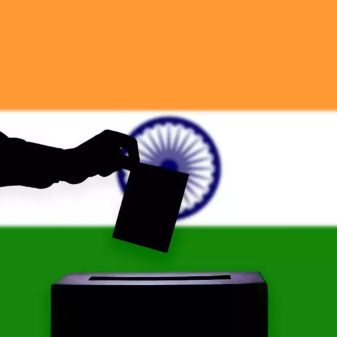
Kajal Basu
Reflexive criticism of it proven wrong and hasty, Pax Sinica is now the talk of the day in the world’s diplomatic squad rooms about parlous emergent geostrategic circumstances.
When China mediated the restoration of diplomatic relations between Iran and Saudi Arabia, the move immediately gave oxygen to fears that China had taken the first step in creating Pax Sinica, an implacable competitor to and possibly replacing the modern-day geopolitical ancien régime, Pax Americana.
Immediately, naysayers came forth. Amos Yadlin, a major-general who once headed Aman, the Israeli military intelligence directorate, wrote dismissively, “Saudi Arabia and Iran will remain enemies on a religious, ideological and strategic level, and it is not at all clear that they will be able to bridge the hatred and differences between them within two months, as the agreement stipulates. For example, it is doubtful whether Iran will fulfil its commitment and force the Houthis, acting relatively independently, to completely cease attacks against Saudi Arabia from Yemeni territory.”
In response, China quietly—and without acknowledgement from the international community, which gave all the credit to the International Committee of the Red Cross and a struggling four-year-old UN-mediated deal known as the Stockholm Agreement—arranged for an FYI event. Yemen’s Houthis, backed by Iran, released 181 hostages, including 15 Saudis, in exchange for the Saudi-backed government to release 706 prisoners.
Reflexive criticism of it proven wrong and hasty, Pax Sinica is now the talk of the day in the world’s diplomatic squad rooms about parlous emergent geostrategic circumstances.
In India’s foreign office, long used to seeing the world as a reflection in the cosmetic mirror in which it primps itself, the talk of Coalition China has given rise to the urgency of a need to institute the erecting of a competitive Pax Indica.
But this is easier contemplated than done. There has never been a Pax Indica, unlike China, which has had at least five regna pacis in its long, unitary, if fractious history that brought under its wing parts of today’s Korea, Japan, Vietnam, Thailand, the Philippines, Malaysia and Sri Lanka.
Indeed, talk about the possibility of a Pax Indica gathered desultory exploratory steam only after the publication in 2012 of the book Pax Indica: India and the World in the Twenty-first Century by the Congress politician and former diplomat Shashi Tharoor. Those were still the years of the Congress, the foreign policy of which was built on inquiry rather than imposition, which is in stark contrast to the dynamics of today’s ruling dispensation, a believer in aggressively shoehorning its interests everywhere possible (and even improbable), and then claiming the right to do so by virtue of the exploitability of India’s vast economy and not because of its diplomatic nous or wisdom.
Not having ranged far and wide (except for a couple of BCE thalassocratic periods of incredible brevity), India has no experience in consultative pacification (of the sort that China showed to defuse the 45-year-long Iran-Saudi proxy conflict, which the US has been trying to ‘manage’ for decades). India’s two attempts at regional bossism were both military in nature, and both were ‘neighbourly’. One ended in the cleaving of a country cloven from India itself; the other in the assassination of a prime minister who had ordered the intervention. One established India as a sub-continental heavyweight; the other cautioned India against throwing that weight around.
Historically, India’s outreach has generally been so soft and shorn of Lebensraum—perhaps because its royalty was so engrossed in governing its culturally centrifugal bits and bobs—that there was no occasion for an argued or imposed diplomacy and muscle-flexing, only for a distrait laissez-faire cordiality between sovereigns in the interests of trade and cultural exchange.
The new world order introduced by the Sino-Russian bonhomie will probably break the canonical geological borders demarcated by continents. It is no longer sufficient to say that Pax Sinica will be like a Eurasian coalition. Its member-states will not be Sino-European alone: they will be scattered across the globe, joined not by contiguous territories but by overlapping sovereign interests (and, if all goes well on that front, by the winding joinery of China’s Border Roads Initiative).
Pax Sinica is distinct from—and far larger in scope than—Xi Jinping’s decade-old promise to the Chinese citizenry of a “moderately prosperous society” that he calls the “Chinese Dream”.
In mid-2021, during celebrations of 100 years of the Communist Party of China (CPC) and referring to the People’s Republic of China (PRC) centennial due in 2049, he had said, “[W]e are now marching in confident strides toward the second centenary goal of building China into a great modern socialist country in all respects.” The Mao suit he had worn then—in contrast to the business suits of the other senior attendees—was taken as an indication of his directionality of governance. But between then and 2023, when he installed himself in his third term (and likely for life), things have changed for him and China.
Xi seems to understand all too well that his internal governance and his outreach for Pax Sinica will have to be on different footings. While it is unlikely that he will be alive for China’s centenary, his diplomatic pace suggests that he would like to cobble together a transnational coalition under China before dotage strikes him.
Alexander Gabuev, a senior fellow at the Carnegie Endowment for International Peace, writes, “Beijing considers itself a champion of the principle of territorial integrity and its primacy over the right to self-determination, being sensitive to not only the issue of Taiwan but also that of separatist movements within its own borders.”
India, on the other hand, champions this principle and this primacy for itself. For others? Perhaps—going by its distancing from Ukraine’s right to territorial integrity and self-determination—not so much.
Where does that leave the Indian dispensation’s decadal dream, Pax Indica—even one limited to the nations in its immediate vicinity? Not much in the reckoning as of today.
(The writer is a Veteran journalist) (courtesy: The New Indian Express)





